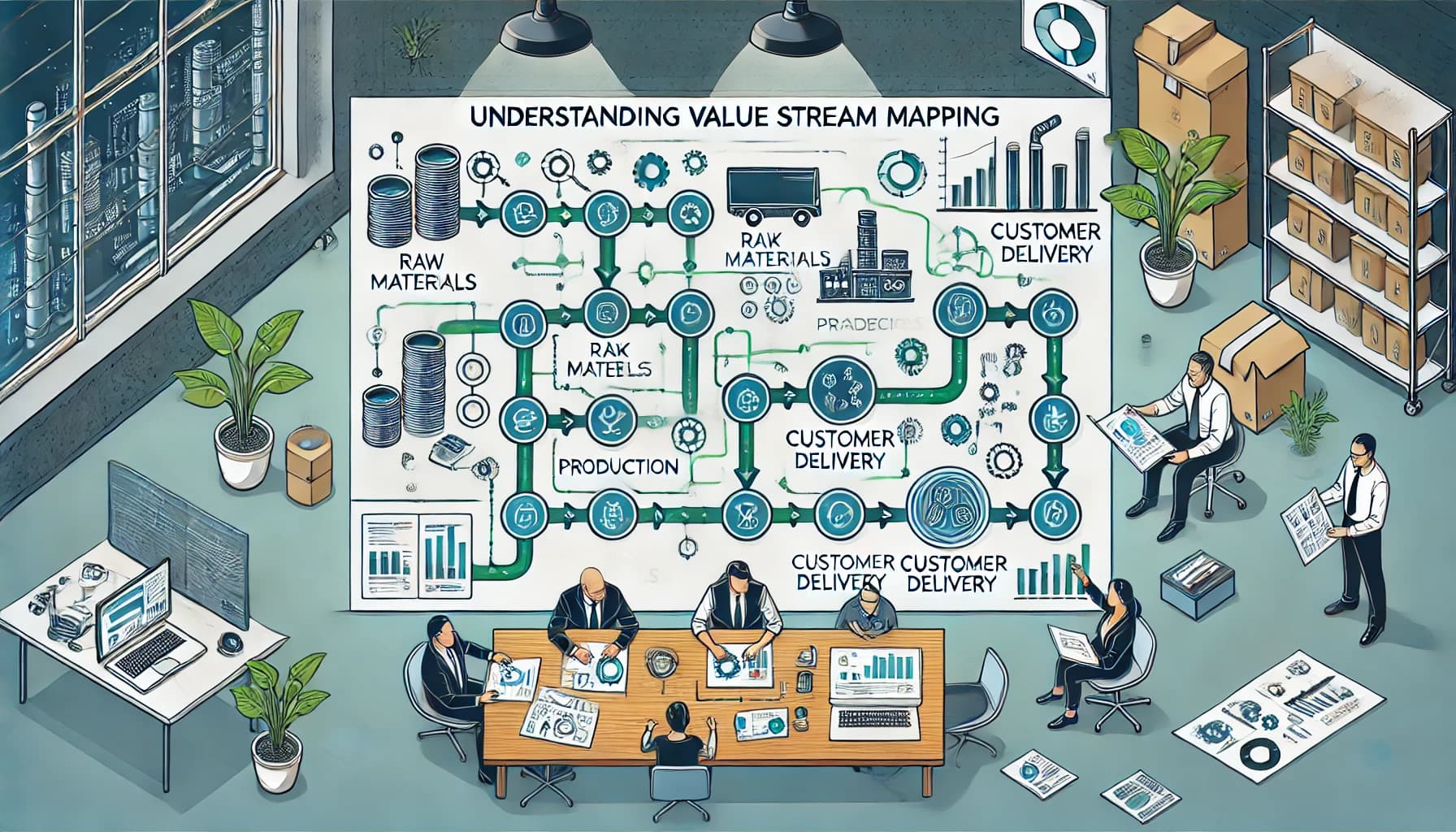Understanding Value Stream Mapping
In today’s competitive landscape, organizations are constantly searching for ways to improve efficiency, streamline processes, and deliver value to customers faster. One powerful tool to achieve this is value stream mapping (VSM), a lean management technique used to visualize and analyze the flow of materials and information required to bring a product or service to the customer.
VSM allows businesses to see the entire process, from raw materials to finished products, and identify inefficiencies, delays, or waste that may be slowing down their operations. By highlighting areas for improvement, VSM empowers teams to redesign workflows for greater efficiency, reduced costs, and faster delivery times.
But before diving into value stream mapping, it’s important to ask: Is your organization truly prepared for it?
Assessing Your Readiness
While value stream mapping can transform the way you work, it requires a certain level of organizational readiness to be effective. Here are some key factors to consider:
1. Commitment to Continuous Improvement
Value stream mapping isn’t a one-time fix; it’s part of a continuous improvement mindset. Is your leadership team committed to ongoing changes? Do employees feel empowered to suggest and implement process improvements? Without a culture of continuous improvement, the impact of VSM will be limited.
2. Cross-Functional Collaboration
Value stream mapping requires collaboration across different departments. The process may span multiple teams, from sales to production to customer service. Do your teams work well together, or are there silos that hinder cooperation? To fully benefit from VSM, cross-functional collaboration is essential.
3. Clear Understanding of Processes
Before mapping a value stream, it’s important to have a clear understanding of your current processes. Does your organization have documented workflows? Do employees understand how their tasks contribute to the overall value chain? If your processes are unclear or undocumented, it may be difficult to identify the areas that need improvement.
4. Data-Driven Decision-Making
Value stream mapping relies on data to identify bottlenecks, waste, and areas for improvement. Does your organization have access to accurate, up-to-date data on performance, production times, and other key metrics? A data-driven approach is critical for making informed decisions during the VSM process.
5. Openness to Change
The goal of VSM is to identify inefficiencies and redesign workflows to eliminate waste. This may require significant changes to how teams operate. Is your organization open to adopting new ways of working? Resistance to change can undermine the effectiveness of value stream mapping.
The Benefits of Value Stream Mapping
If your organization is ready to embrace value stream mapping, the benefits can be transformative. Here’s what you can expect:
• Improved Efficiency: VSM identifies non-value-adding activities, enabling teams to streamline their processes and reduce waste.
• Better Collaboration: By involving multiple departments in the mapping process, VSM fosters collaboration and a shared understanding of how work flows through the organization.
• Faster Time-to-Market: With optimized processes, organizations can deliver products and services to customers more quickly.
• Increased Customer Value: Value stream mapping helps businesses focus on what matters most—delivering value to customers. By eliminating waste and improving efficiency, you can provide higher-quality products and services.
• Enhanced Decision-Making: The insights gained from VSM allow leaders to make informed decisions based on data, rather than guesswork.
Getting Started with Value Stream Mapping
If you’ve determined that your organization is ready for value stream mapping, the next step is to gather your teams and start mapping your value streams. Begin by identifying the key processes that deliver value to your customers and involve the necessary stakeholders in the mapping process. You’ll want to create a detailed visual map of your current workflow, then analyze it for inefficiencies and areas of waste.
From there, your team can work together to redesign the process, implementing changes that reduce waste and enhance the flow of value. With the right commitment and collaboration, value stream mapping can unlock new levels of efficiency and productivity in your organization.
Conclusion
Value stream mapping is more than just a process improvement tool—it’s a mindset shift toward continuous improvement and collaboration. If your organization is ready to embrace this approach, the potential benefits are vast. You’ll gain greater visibility into your processes, foster cross-functional teamwork, and ultimately deliver more value to your customers.
Are you ready to take your organization to the next level? Start by assessing your readiness for value stream mapping, and take the first step toward building a more efficient, productive future.
Transform Your Processes with Value Stream Mapping
Join our comprehensive course to master value stream mapping. Discover how to identify waste, optimize workflows, and drive continuous improvement across your organization. Perfect for leaders and teams ready to enhance efficiency and deliver more value to customers!
